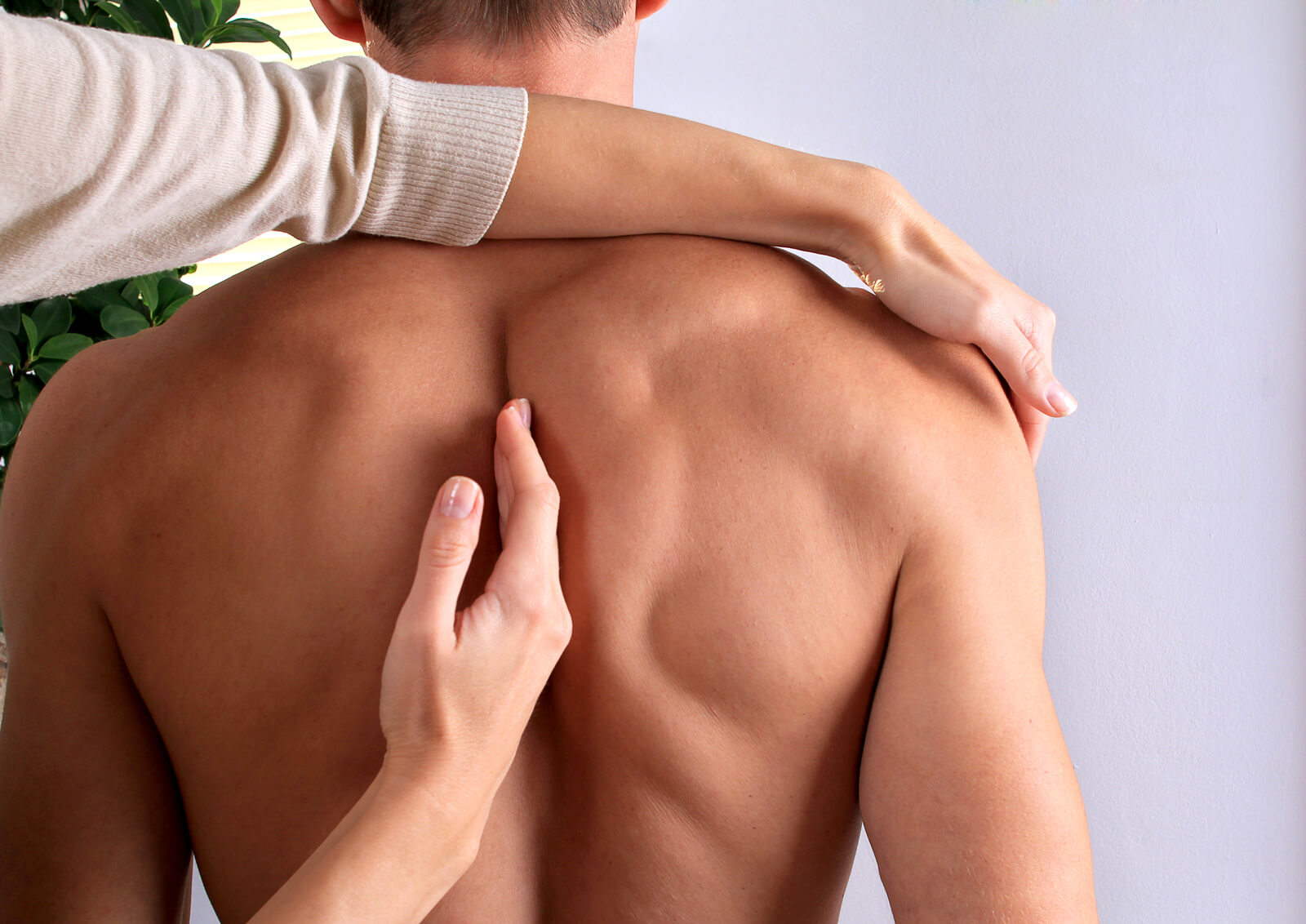The thoracic spine is one of the most common musculoskeletal problems that presents to physiotherapists.
The thoracic spine includes the spinal joints, rib joints and discs in the upper back and may be associated with a varied combination of pain, altered movement and muscular spasm.
The thoracic spine is one of the more difficult areas for assessment and treatment due to the interplay between it and the shoulder joint, neck, lower back, nervous system and organs such as the heart, lungs and stomach.
The role of the thoracic spine
The thoracic spine has a complex and often overlooked role within the body.
It is a key area of load transfer between the upper and lower body, it is also a key area for rotational movement within the body.
It must also be assessed and treated as a functional unit including not only the spine but the rib cage.
This unit provides a site for muscle and connective tissue attachments from the head, neck, shoulder blade, clavicle, lumbar spine and pelvis as well as connections to organs in the rib cage and abdomen.
It has a role in breathing, is protection for vital organs, and has a relationship to emotions and the nerves that control the ‘fight or flight’ response.
Common causes of thoracic spine pain
- Spinal joint sprain involving the disc or zygapophyseal (facet) joint
- Spinal muscle strains
- Rib joint sprains
- Scheunemann’s syndrome in adolescents
- Postural and overuse syndromes in students and office based workers
Rib or compression fractures, thoracic outlet syndrome and T4 syndrome are less common causes of thoracic pain.
Other causes of pain which should not be missed and physios are trained to flag include cardiac or lung conditions (pneumothorax, pulmonary embolism), peptic ulcers, tumours and mesothelioma after exposure to asbestos.
Optimal thoracic spine movement
The primary movement of the thorax is rotation.
The main rotation centres in the body are the upper neck, mid thoracic spine, hips and low ankle joints.
If rotation is impaired in these areas, you will end up with ‘victims’ by compensating in body parts in between them, e.g. neck, lower back and knee pain.
Normal movement of the thoracic spine into a forward bend or ‘slouch’ involves the ribs and spinal segments rotating forward. As the thoracic spine extends, the ribs and spinal segments rotate backwards.
Bending to the side is a combination of spinal segments side bending, ribs on the same come together while ribs on the opposite side separate.
Inability to move well in all directions predisposes people to injury and pain.
The importance of posture and alignment
Another component of a thoracic spine examination is a postural assessment.
This includes the position of the upper back relative to the body, ideally with the centre of the chest over the pubic bone and the centre of the rib cage aiming to be over the tail bone.
It also includes an assessment of the spine position, which may be flexed forwards (kyphosis) or sideways (scoliosis).
Shoulder blade position and the presence of muscle tension pulling on the spine are also assessed.
Poor alignment and poor patterns of repetitive movement are a big cause of thoracic spine pain and dysfunction.
The positive of this is that alignment and muscle patterning can be retrained and corrected!
Physios are experts in assessing and treating problems of the thoracic spine.
It is important to not only address the pain but any non-optimal postures, muscle patterns, restricted movements, stability and strength issues that may be a predisposing factor for pain.
Treatment options
- Soft tissue massage, muscular and trigger point releases
- Light thoracic spinal mobilisations for pain relief
- Firm thoracic spinal mobilisations for stiffness
- Manipulations
- Modalities such as heat, ice and TENs
- Protection such as compression, padding, strapping
- Support braces or tape assisted posture retraining
- Muscular stretches
- Range of motion and breathing exercises
- Postural training for core and alignment
- Muscular strength and endurance exercises
- Dry needling
- Manual handling, ergonomics, technique training, education and advice
- Sport, work, hobby specific retaining
Early and acute treatment focuses on understanding the diagnosis, reduction in pain and poor movement patterns and restoration of range of motion.
Early treatment focuses on understanding the diagnosis, reduction in pain and poor movement patterns and restoration of range of motion.
As with any other exercise prescription, programs start in a more neutral position, light intensity, activation based with high reps and frequency.
This is progressed to a full range of motion, increased resistance and lower frequency.
Challenges such as unstable base, speed, sports specific challenges, balls, bats, racquets can also be added depending on the clients’ needs and abilities.

